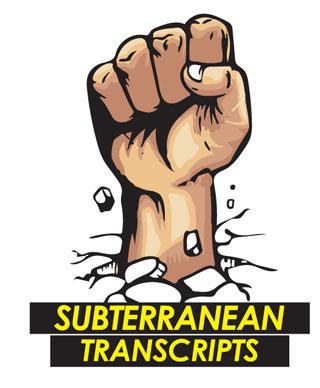On plugging the oil leaks in CPC
23 March 2023 03:35 am Views - 423


Tender procedures. Foot dragging. Tripartite agreements sat upon. We are talking of the Ministry of Power and Energy. The Ceylon Petroleum Corporation (CPC) a state bank, relevant officials, Tier-One traders who produce oil, have their own wells and extracting and refining equipment and run their own trading operations. Tier-Two traders are, well, just traders.

The mismanagement and corruption (yes!) is perhaps best evidenced by the options that the CPC does not consider, despite cogent proposals with terms far more favourable not just to the CPC but the country economy, the industries and the general public as a whole.
Now what if another refinery is added using the free space at Sapugaskanda, as has been proposed? It would mean 110,000 barrels of additional capacity
Let’s consider an alternative scenario. Suppose there is a top Middle-Eastern oil producing company that is owned by that particular government, with trading offices in the UK, Singapore and Dubai. Suppose this company proposes to supply the entire crude oil requirement of the Sapugaskanda Refinery with a, say, six month credit period, and pledges to off-take all refined products leftover after providing for domestic demand. It would not only sort out the country’s energy issues and provide domestic fuel-need security but also turn Sri Lanka into a regional petroleum, oils and fuel export hub. At zero-dollar cost to the nation.
Consider capacities. As of now the full rated capacity of the Refinery is 55,000 barrels per day. Historically, the facility processes just 22-25,000 barrels per day due to technical, maintenance, procurement, and other “management” issues. The reason is well known. The output of heavy refined products like the various grades of furnace oils and marine fuels even from high grade light crude oil is around 50-60% and Sri Lanka just doesn’t have sufficient domestic capacity to absorb anything more above a 22-25,000 barrels per day refining operation. Now, considering that a top tier player who is a producer, refiner and trader can off-take anything and everything produced, the Refinery can operate close to capacity without having to worry about shipping out the excess products once domestic demand is satisfied. Sri Lanka would get at least the processing margin and, if the banking system is stable, it is not inconceivable that the entire transaction be channeled through it. It would obviously make the banking system dollar-rich and infuse much needed dollars into the float.
Such an arrangement would earn Sri Lanka between 10-20% of its GDP in dollars and remove the cost of crude oil procurement altogether. Now suppose this top-tier player has a market capitalization approximate to two trillion US dollars which is greater than the sum of the next three players, and doesn’t demand upfront payment? Does it even make sense to play with relatively two-bit traders? If it does, does it not mean that either there’s corruption or absolute incompetence?
Just for context, consider that countries like Bangladesh, Cambodia, Malaysia, Singapore, South Korea, Thailand, Vietnam and Indonesia prefer such arrangements, i.e., agreements with the top player who is reliable, reputed and don’t have to impose markups simply because oil need not be purchased. As is, even India, which has its own oil reserves, does good business with this company which operates as co-owner of refining facilities.
Let’s talk numbers. Let’s for simplicity assume a barrel of crude oil costs US$100. Considering yield margins of 30-35% on refined products, a barrel of crude refined will produce US$130-135 of refined products. That would amount to at minimum a processing margin yield of US$7-10 per barrel of refined products. If the banking system is stable, the balance US$20-25 (or 23-27) can be routed through it. That’s US$153 million at the margin and US$655 million at the yield margin.
Now what if another refinery is added using the free space at Sapugaskanda, as has been proposed? It would mean 110,000 barrels of additional capacity. Per day. What if someone proposes that this asset, worth around US$1.2 billion will be built by a top-tier player but will be fully owned by Sri Lanka?
Consider also that the Ministry of Energy has solicited an expression of interest to set up a refining complex in BoI controlled land in Hambantota. Apparently 400 acres with the possibility of adding another 190 acres. Of course, this doesn’t necessarily translate into a capacity to refine 650,000 barrels per day overnight considering technical requirements which, one assumes, the experts of the CPC, BoI and the Ministry are aware of. While it does pose the issue of creating unnecessary inbred competition (with Sapugaskanda), if a technically sound and experienced partner who does not fear the market is involved, it does make sense. As long as the CPC moves out of what appears to be a lining-pockets culture of dealing with suppliers.
There’s more on that. An example would make things clear. In July 2022 a tender was called for the supply of JetA1 fuel. Although it could have been supplied at US$10 per barrel, the suggested price was US$13.95. It was eventually awarded at US$21.95 per barrel after delaying the awardee’s ability to supply at US$13.95. That’s for 40,000 metric tonnes per month, roughly 250,000 barrels. That’s some US$35 million lost a year. Why was this done? Does Kanchana Wijesekera know? Can the MD of CPC provide an answer? Do they believe that Sri Lanka can be turned into a jet aviation fuel hub? At that price? Is it not true that the CPC came up with bizarre technical objections which the industry would guffaw at in order to ensure that the supplier quoting the higher price would be awarded the tender? Was there pocket-lining?
In June 2022, when Sri Lanka was unable to pay in dollar upfront and wanted credit for the supply of crude oil, one supplier was ready to give six months credit. However, the mechanism that exists requires a tripartite Non-Resident Rupee Account agreement between the CPC, the supplier and a state bank. The bank is required to do the dollar conversion and send the money to the supplier. In this instance, the bank signed two NRRA agreements with two parties offering less favourable terms. The bank not only refused to sign the NRRA with the supplier offering the best terms, but refused to communicate with this party which, mind you, is an account holder of that bank, as to what their specific grievance was.
Who at the state bank that is responsible for this? Is he/she in cahoots with some CPC and Ministry officials? Could the Minister investigate this?